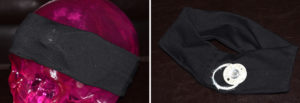Headaches are a common human malady and present in many forms that range anywhere from a minor nuisance to that of being debilitating. One of the more severe headache forms is that of migraines. Being a true neurologic disorder, this type of headache is associated with head pain that is both disruptive and causes dysfunction. While their exact pathophysiologic mechanism remains not well understood, drug therapies remain the mainstay of treatment for which they are numerous prescribed medications. While more recent therapies, such as injectable Botox and nerve decompression surgery, have offered symptom reduction for the most severely afflicted, most migraine patients still rely on oral medications whether they are OTC (over the counter) or by prescription.
A newer and alternative therapy to the treatment of migraines are electroceutical devices. These are external devices that are applied directly over the primary migraine location that use electrical signals to create a neuromodulation effect. While neuromodulation typically refers to the use of chemicals to make the nerve work, an external electrical signal strives to change the function of the nerve to either abort to decrease painful nerve transmissions. Such external neuromodulation devices have been successfully used over the supratrochlear and supraorbital branches of the ophthalmic nerve (first division of the trigeminal nerve) in frontal migraines using transcutaneous electrical nerve stimulation (TENS) to reduce the severity or prevent episodic migraines. However, the TENS approach has also been shown to have patient compliance issues due to skin irritation and the unpleasant tingling nature of the electrode contact with the skin.


Dr. Barry Eppley
Indianapolis, Indiana


